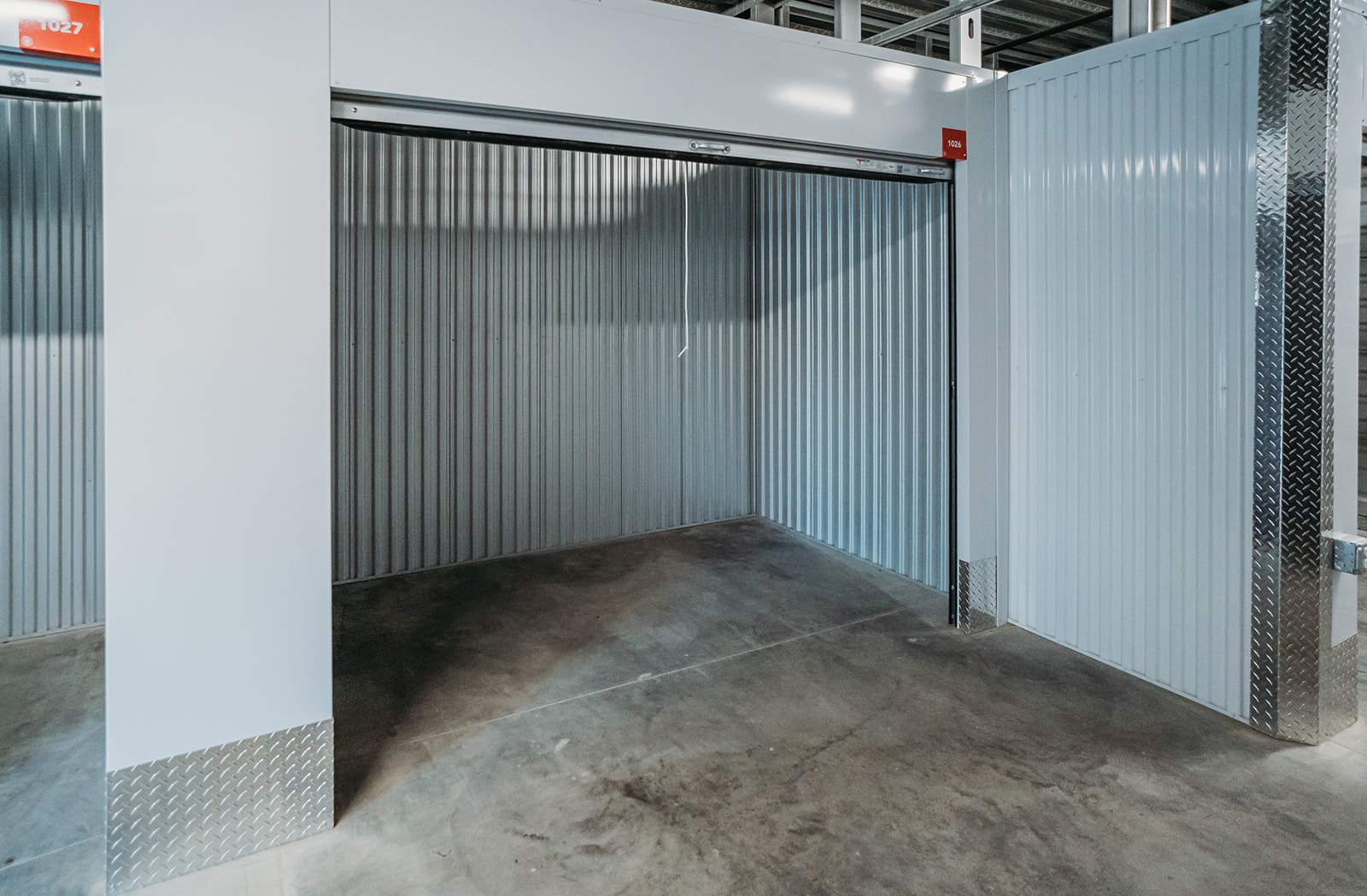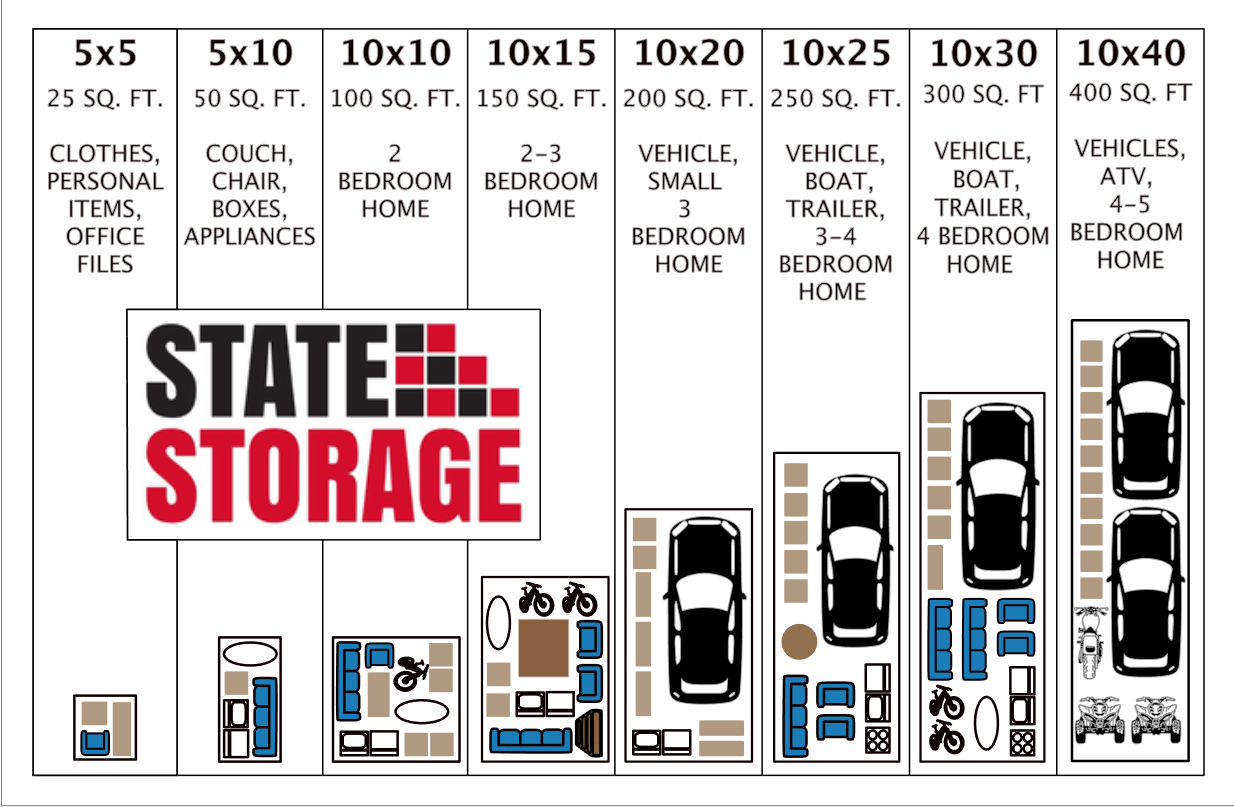Storage Unit Size Considerations for a 1-Bedroom Apartment

Choosing the right storage unit size for a 1-bedroom apartment is essential to ensure you have enough space for your belongings while avoiding unnecessary costs. The ideal size depends on various factors, including the amount of belongings you need to store, your lifestyle, and the layout of your apartment.
Typical Storage Needs for a 1-Bedroom Apartment
A 1-bedroom apartment typically requires storage for various items, including:
- Seasonal clothing and accessories: Winter coats, bulky sweaters, and summer clothes can take up significant space in a small apartment.
- Out-of-season sporting equipment: Bikes, skis, camping gear, and other seasonal sporting equipment can be stored efficiently in a storage unit.
- Extra furniture: A spare bed, dining table, or other furniture pieces not currently in use can be stored to free up space in your apartment.
- Books and documents: Collections of books, personal files, and important documents can easily accumulate and require dedicated storage.
- Artwork and decor: Large paintings, sculptures, and other decorative items can be stored safely and securely in a storage unit.
- Kitchen appliances: A stand mixer, food processor, or other appliances not frequently used can be stored to optimize kitchen space.
Factors Influencing Storage Unit Size Requirements
Several factors can influence the size of the storage unit you need:
- Lifestyle: Individuals with an active lifestyle, such as those who enjoy hobbies or travel frequently, may require more storage space for equipment or seasonal items.
- Number of Belongings: The amount of belongings you have will naturally dictate the size of the storage unit you need. If you have a large collection of items, a larger unit may be necessary.
- Apartment Layout: The layout of your apartment can also influence storage needs. If you have limited closet space or lack a dedicated storage area, you may require a larger storage unit.
Storage Unit Size Comparisons
- 5×10 Storage Unit: A 5×10 unit is the smallest size typically offered and is suitable for storing a few boxes, small furniture items, or seasonal clothing. It may be adequate for a 1-bedroom apartment with limited storage needs.
- 10×10 Storage Unit: A 10×10 unit offers significantly more space than a 5×10 and can accommodate furniture, boxes, and other larger items. It is a common choice for 1-bedroom apartments with moderate storage needs.
- 10×20 Storage Unit: A 10×20 unit provides ample space for a large amount of belongings, including furniture, appliances, and boxes. It is suitable for 1-bedroom apartments with extensive storage needs or those who need to store items from a larger space.
Pros and Cons of Storage Unit Sizes for a 1-Bedroom Apartment
| Storage Unit Size | Pros | Cons | 5×10 | Affordable, suitable for small storage needs | Limited space, may not accommodate larger items | 10×10 | Provides ample space for a 1-bedroom apartment, versatile for various storage needs | May be too large for smaller storage needs, higher monthly cost | 10×20 | Offers substantial space for large storage needs, can accommodate bulky items | Expensive, may be too large for most 1-bedroom apartments |
|---|
Factors Influencing Storage Unit Size Choice: Storage Unit Size 1 Bedroom Apartment

Choosing the right storage unit size is crucial for ensuring your belongings are safely stored and easily accessible. Factors like the amount of stuff you need to store, your budget, and the unit’s accessibility all play a significant role in this decision.
Reasons for Needing a Storage Unit
The need for storage units often arises from various life events and circumstances. Here are some common reasons why people choose to rent storage units:
- Seasonal items: Storing seasonal items like winter clothes, holiday decorations, or outdoor furniture can free up valuable space in your apartment.
- Furniture: When downsizing or rearranging your apartment, you might need temporary storage for furniture that you don’t have immediate use for.
- Belongings from a previous residence: Moving to a smaller apartment can leave you with items that don’t fit, requiring a storage solution.
- Renovations or repairs: During renovations or repairs, storage units provide a safe place to keep belongings while work is being done.
- Moving: If you’re moving soon, a storage unit can be a convenient way to store your belongings before moving into your new home.
Personal Preferences and Budget Constraints
Personal preferences and budget constraints significantly influence the storage unit size selection process. Consider the following:
- Storage Needs: Individuals with a large amount of belongings may require a larger unit, while those with fewer items can opt for a smaller unit.
- Accessibility: Frequent access to your belongings might necessitate a unit with convenient drive-up access or climate control for sensitive items.
- Budget: Storage unit sizes directly impact rental costs. It’s essential to choose a size that fits your budget while accommodating your storage needs.
Accessibility and Location
Accessibility and location are crucial considerations when selecting a storage unit.
- Proximity to your residence: Choosing a storage unit close to your apartment can save time and effort for accessing your belongings.
- Security: Ensure the storage facility has adequate security measures like surveillance cameras, gated access, and on-site staff to safeguard your belongings.
- Climate control: If you’re storing sensitive items like electronics, furniture, or artwork, a climate-controlled unit can protect them from extreme temperatures and humidity.
Flowchart for Determining Ideal Storage Unit Size
A flowchart can be helpful in determining the ideal storage unit size based on your specific needs. Here’s a simplified example:
Start:
* Do you have a lot of belongings to store?
* Yes: Proceed to Step 2
* No: Proceed to Step 4
Step 2:
* Do you need climate control?
* Yes: Proceed to Step 3
* No: Proceed to Step 3
Step 3:
* Consider a larger storage unit (10×10 or larger)
* Proceed to Step 5
Step 4:
* Consider a smaller storage unit (5×5 or 5×10)
* Proceed to Step 5
Step 5:
* Choose a storage facility that meets your accessibility and security requirements.
* End
Maximizing Storage Space within a 1-Bedroom Apartment
Efficiently using space in a 1-bedroom apartment is essential for maximizing storage potential.
- Vertical Space: Utilize vertical space by incorporating shelves, tall cabinets, and stackable storage containers.
- Under-Bed Storage: Invest in storage beds with built-in drawers or utilize under-bed storage bins to maximize space.
- Over-the-Door Organizers: Over-the-door organizers can provide additional storage for small items in closets or bathrooms.
- Wall-Mounted Shelves: Wall-mounted shelves can free up floor space and provide extra storage for books, decor, or other items.
- Multifunctional Furniture: Opt for furniture that serves multiple purposes, such as a sofa bed or a coffee table with built-in storage.
Storage Unit Features and Amenities

Choosing the right storage unit involves more than just picking the right size. Understanding the features and amenities offered by different storage facilities can significantly impact your overall storage experience, ensuring your belongings are safe, secure, and accessible.
Common Storage Unit Features and Amenities, Storage unit size 1 bedroom apartment
- Climate Control: Climate-controlled storage units are essential for protecting sensitive items like furniture, electronics, artwork, and documents from extreme temperatures and humidity. They help prevent warping, damage, and mold growth, ensuring your belongings remain in good condition.
- Security Measures: Security is paramount when storing valuable items. Look for facilities that offer features like:
- 24/7 Surveillance: CCTV cameras and security personnel monitoring the premises around the clock deter potential theft and provide a record of activity.
- Gated Access: Secure gates with entry codes or keypads restrict unauthorized access to the storage facility.
- Individual Unit Alarms: Motion sensors or alarms installed on each unit provide an extra layer of protection, alerting facility staff to any suspicious activity.
- On-Site Management: Having a manager or staff on-site during business hours ensures immediate response to any issues and enhances security.
- Access Hours: Convenient access hours are crucial, especially if you need to frequently access your belongings. Consider the facility’s operating hours, especially if you have irregular work schedules or need to access your unit outside standard business hours.
- Other Features: Some facilities offer additional features like:
- Moving Truck Rental: Rent a moving truck on-site to simplify the process of loading and unloading your belongings.
- Packing Supplies: Purchase packing materials like boxes, tape, and bubble wrap directly from the facility, saving you time and effort.
- Insurance Options: Explore insurance options offered by the facility to protect your belongings against unforeseen events like fire, theft, or natural disasters.
Assessing the Quality of Storage Unit Facilities
- Facility Condition: Assess the overall condition of the facility, including the cleanliness of the storage units, hallways, and common areas. Signs of neglect, such as leaks, debris, or poor lighting, can indicate a lack of maintenance and potentially compromised security.
- Security Measures in Action: Observe the security measures in place. Are security cameras visible and operational? Are gates functioning correctly and monitored? Do you feel safe and secure on the premises?
- Customer Reviews and Reputation: Read online reviews from previous customers to gain insights into the facility’s reliability, customer service, and overall experience. Look for patterns in reviews and pay attention to recurring issues or concerns.
- Contract and Fees: Thoroughly review the lease agreement, paying close attention to the terms and conditions, rental fees, late fees, and any additional charges. Clarify any questions or concerns with the facility management before signing the contract.
Storage Unit Types: Pros and Cons
Storage units come in various types, each with its own advantages and disadvantages. Consider your specific needs and preferences when choosing the best type for your situation.
| Storage Unit Type | Pros | Cons |
|---|---|---|
| Drive-Up Units | Easy access for loading and unloading, convenient for larger items or frequent access | Potentially less secure, susceptible to weather elements, limited climate control options |
| Indoor Units | More secure, protected from weather, often climate-controlled options available | May require more effort for loading and unloading, less convenient for frequent access |
| Climate-Controlled Units | Ideal for sensitive items, protects against temperature fluctuations and humidity | Higher rental costs, may not be necessary for all items |
Storage unit size 1 bedroom apartment – When figuring out the right size storage unit for a 1-bedroom apartment, remember that the amount of stuff you’ll need to store depends heavily on how much you’re willing to part with during the move. If you’re decluttering and getting rid of things, a smaller unit might be enough.
But if you’re keeping everything, it’s a good idea to consider the cost of moving, especially if you’re hiring movers. Check out this helpful guide on how much to move a 1 bedroom apartment to get an idea of the costs involved.
This will help you decide how much storage space you really need and make sure you’re not paying for more than you need.
When choosing a storage unit for a 1-bedroom apartment, consider the amount of belongings you need to store. While you may be tempted to go for the smallest option, it’s often wise to opt for a slightly larger unit to accommodate future needs.
Take inspiration from 1 bedroom luxury apartment floor plans to see how even in smaller spaces, smart design maximizes storage potential. This will help you make a more informed decision about the size of your storage unit, ensuring you have enough space to keep your belongings safe and organized.
